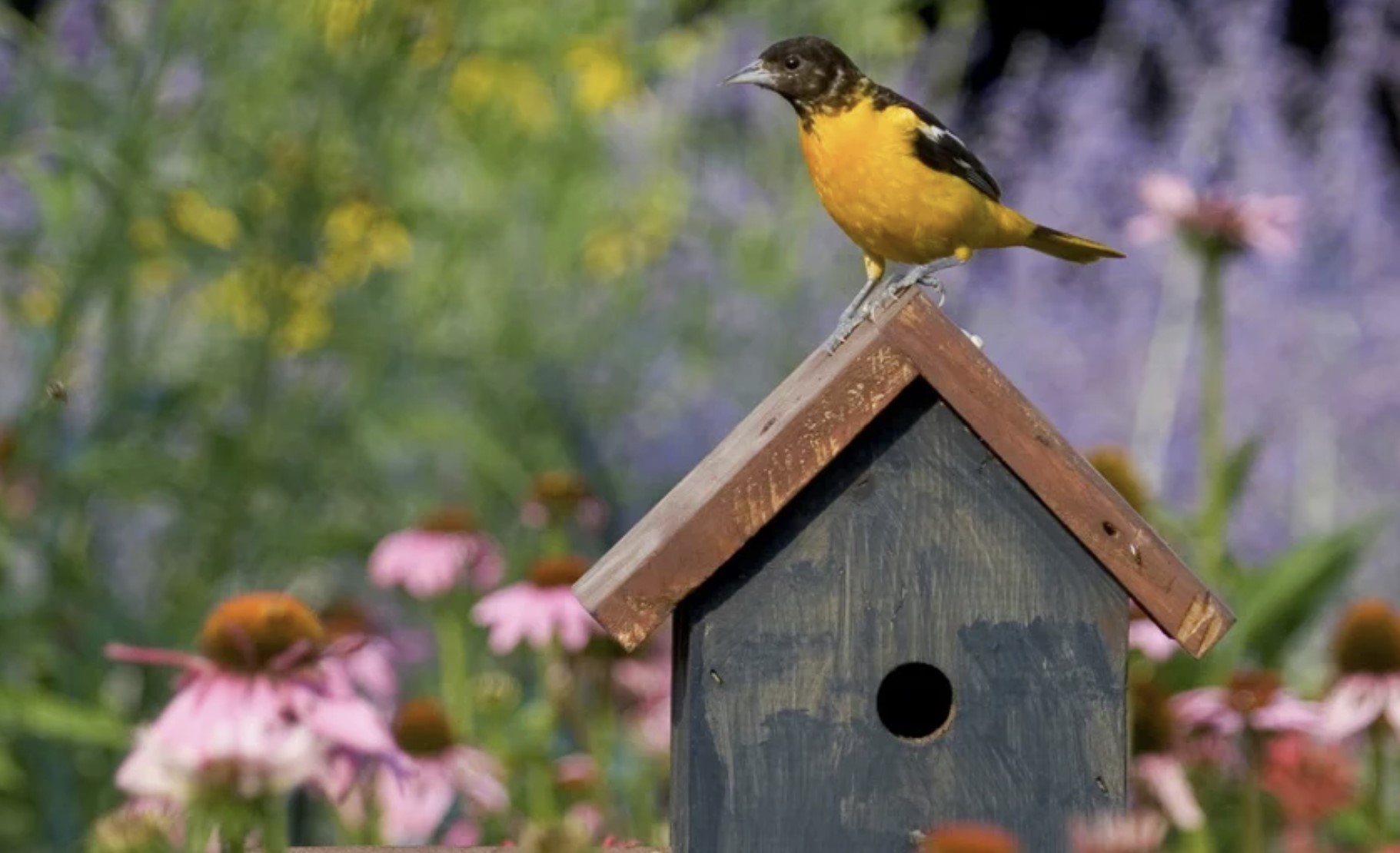Not Just a Collection of Plants – a Home
by Doug Lockard
A healthy habitat for any animal must provide abundant and appropriate food, as well as clean water, shelter, and spaces to breed and raise young.
Sounds like home, doesn’t it?
Over time we’ve converted more and more “wildlife” habitat into “human” habitat through residential development, urban sprawl, and agriculture. Pollution and the introduction of invasive species have further damaged natural areas, and climate change is altering habitats in ways we are just beginning to understand.
With an estimated 200 acres a day being lost to development, every day there are fewer places that South Carolina wildlife can call home. In urban and suburban areas, it’s residential landscapes, not public land, business, or conserved areas, that added together make up the bulk of overall greenspace. So, it follows that our gardens, yards, and balconies have the potential to help provide much needed habitat.
If you’re one of the almost 1.5 million property owners in South Carolina, the decisions you make about your landscape matters far beyond your plot survey.
YOU CAN MAKE A DIFFERENCE, and we’re going to share some ideas for putting nature back in the neighborhood and broadening our collective perspective beyond human needs to consider the other creatures with whom we share this planet.
Native gardens don’t have to look messy!
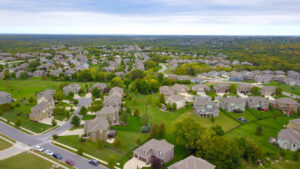
Biodiversity at Home
We are all a part of the biodiversity of our planet. What happens in our yard impacts what happens all around us.
When a developer clear cuts a forest and scrapes the land to build a new subdivision, it removes a living system of ecology that relies on the billions of daily interactions of millions of life forms. Replacing those native trees, shrubs, perennials, ferns and vines with concrete, turf grass and non-natives is tantamount to ecological sterilization by catastrophic reduction of the biodiversity.
From the micro-organisms in the soil to the insects and mammals on the ground and the birds, bees, and pollinators in the air; all life other than human must adapt or migrate elsewhere to survive. Most cannot; or at least in time to survive. And the new neighborhood is denied the benefits of the life-sustaining biodiversity essential for their long-term health and well-being.
It doesn’t have to be that way. Human beings are adaptable. Cities and counties are getting savvier about the greening of their codes, water capture, tree canopies, and efforts to develop and maintain environmental corridors. Albeit slowly.
Home owners are beginning to push back on out-of-date HOA “meatball” shrubs and turf grass restrictions in favor of a more tolerant “living landscape” for the assurance of a more beneficial living environment and return-on-investment (ROI).
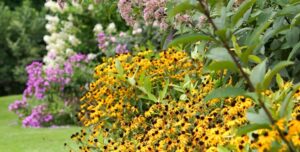
Habitat by Design
One of the greatest benefits of engaging with the SCNPS is the access to lifelong learning opportunities.
Within our ranks are members with a vast array of interests and experiences which intersect around native plants and biodiversity.
Get involved to learn more about native plants, their characteristics and benefits, and how to renovate or create a living landscape with these and other elements:
•Multi-Season Interest: For a continuous succession of flowers, foliage, and food for wildlife
•Layered Landscapes: A diversity of plant forms and textures means greater interest
•Turfgrass Reduction: Less grass means more beneficial habitat and less maintenance
•Diversity: A wildlife garden needs abundance, variety, and “Keystone” plants
•Connecting Habitat: Create a habitat corridor by collaborating with neighbors
•Rethink the “Pretty” in Landscape: Enjoy our unique heritage plants
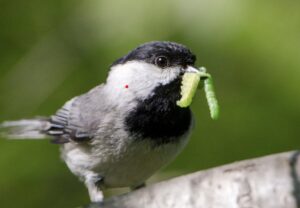
Local Food Webs
Native plants are the foundation of local food webs, providing nutritious leaves, nectar, pollen, berries, and seeds eaten by different life stages of pollinators, birds, and other animals. The majority of remaining birds in North America feed their young insects, mainly caterpillars, who eat native plants. So, it follows that bird populations are tied to the abundance or scarcity of native insects. Birds eat caterpillars and there are over 400 species of butterflies and moths in South Carolina.
Most native butterflies and moths are specialists, meaning they have co-evolved with certain plants so that their caterpillars can eat only the leaves of that particular native plant species. When a plant species is lost from an area, the habitat can no longer provide food for dependent insect species, which in turn may go locally extinct.
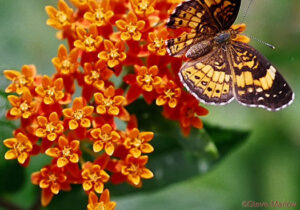
Keystone Plants
A small group of high-impact native plants supports a disproportionately large chunk of local caterpillar species and specialist pollinators. Doug Tallamy calls them “keystone plants” because without them, local food webs and ecosystems would collapse. Top “keystone” trees and shrubs for South Carolina are our native oaks (Quercus), native cherries (Prunus), native birches (Betula), and the genus Carya (which includes hickory and pecan).
To find keystone plants for your area, check out the National Wildlife Federation’s Native Plant Finder.
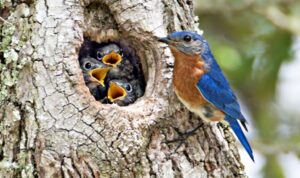
Safe at Home
Crucial too are shelter and safe cover, which your yard can provide if you include lots of native plants in your landscape and arrange them three-dimensionally, in layers.
If possible, include tall trees, understory trees and shrubs, and lower expanses of grasses and herbaceous plants.
Aim for a range of situations (sunny or shady, high and low, exposed or hidden, and so on) to satisfy the habitat preferences of diverse species. Evergreen trees and shrubs offer winter shelter.
Beneath trees, plant a carpet of native plants as ground cover instead of lawn or wood mulch to provide the protected vegetation layer that pollinators and other beneficial insects need to complete their lifecycles.
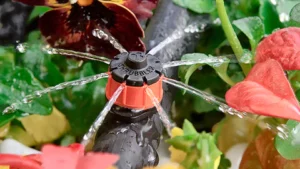
Save Time & Money
When you choose the right native appropriate for your site conditions, you should need no fertilizer and only minimal watering (during droughts) once established. This means lower cost, fewer chemicals, and less maintenance than coddling non-native plants or the work involved in maintaining a traditional turf lawn!
Native plants provide food and shelter for birds and beneficial insects that keep insect pests in check, so you can hold the pesticides, too. Once you have enough plants and species diversity, your landscape becomes a self-monitoring system. While no garden is “zero-maintenance,” a yard filled with native plants can help simplify your life.
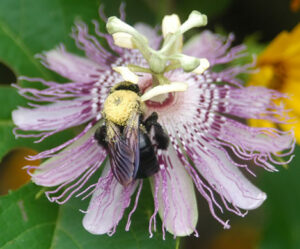
Welcome Wildlife
Native plants are the foundation of the food web. Their foliage provides food for caterpillars, the sole food source for the young of many of our native songbirds. Flowers supply pollen and nectar for butterflies, bees, hummingbirds, and other pollinators. Seeds and berries of native plants are devoured by migrating and overwintering birds and other wildlife. Restoring native plants in your yard will invite wildlife to return to share in the bounty of the land.

